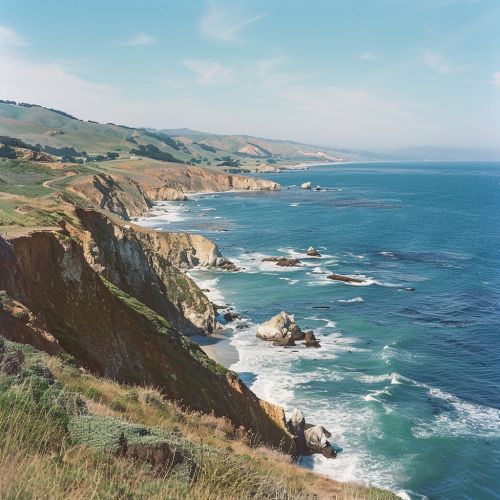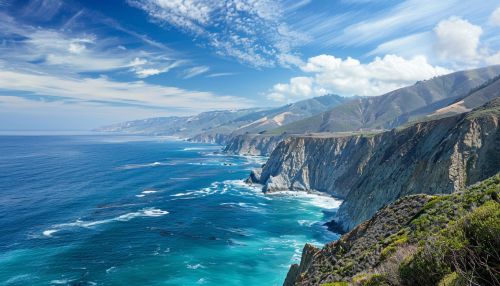California
Geography
California, also known as the Golden State, is the most populous state in the United States. It is located on the western coast of the country, bordered by Oregon to the north, Nevada and Arizona to the east, and the Mexican state of Baja California to the south. The Pacific Ocean forms the state's western coastline.


California's geography is incredibly diverse, ranging from the arid Mojave Desert in the south to the lush Redwood and Douglas-fir forests of the north. The state is also home to the Sierra Nevada mountain range, the fertile farmlands of the Central Valley, and the iconic coastal cities of Los Angeles, San Francisco, and San Diego.
History
The history of California is rich and varied, beginning with the indigenous tribes that inhabited the region for thousands of years before European exploration. The first European to explore California was the Spanish explorer Juan Rodriguez Cabrillo, who arrived in 1542. However, it was not until 1769 that the first Spanish missions were established by Franciscan friar Junipero Serra.
In 1821, California became a part of Mexico following its independence from Spain. However, the Mexican rule was short-lived, as the state was ceded to the United States in 1848 following the Mexican-American War. The same year, the discovery of gold at Sutter's Mill sparked the California Gold Rush, attracting hundreds of thousands of prospectors to the state.
California was admitted as the 31st state of the Union on September 9, 1850. The state continued to grow rapidly throughout the 20th century, becoming a global center for entertainment, technology, and agriculture.
Economy
California has the largest economy of any U.S. state and is the fifth largest economy in the world. The state's economy is diverse, with key sectors including technology, entertainment, agriculture, and tourism.
Silicon Valley, located in the southern part of the San Francisco Bay Area, is a global center for high technology, innovation, and social media. It is home to many of the world's largest high-tech corporations, including Apple, Google, and Facebook, as well as thousands of startup companies.
The entertainment industry, centered in Hollywood, produces a significant portion of all American media, including movies, television shows, and recorded music. The state's agricultural sector is also highly productive, with California being the top U.S. state for cash farm receipts.
Tourism also plays a significant role in California's economy. With its diverse landscape, iconic landmarks, and pleasant climate, the state attracts millions of visitors from around the world each year.
Demographics
As of 2020, California has a population of approximately 39.5 million people, making it the most populous state in the U.S. The state is known for its cultural diversity, with large Hispanic, Asian, and African American communities.
The state's largest city is Los Angeles, which is also the second largest city in the U.S. Other major cities include San Diego, San Jose, San Francisco, and the state capital, Sacramento.
Education
California is home to a number of prestigious universities and research institutions. The University of California system includes renowned campuses such as UC Berkeley and UCLA. The California State University system is the largest comprehensive system of higher education in the country, with 23 campuses and eight off-campus centers.
The state is also home to a number of private universities, including Stanford University, the California Institute of Technology, and the University of Southern California.
